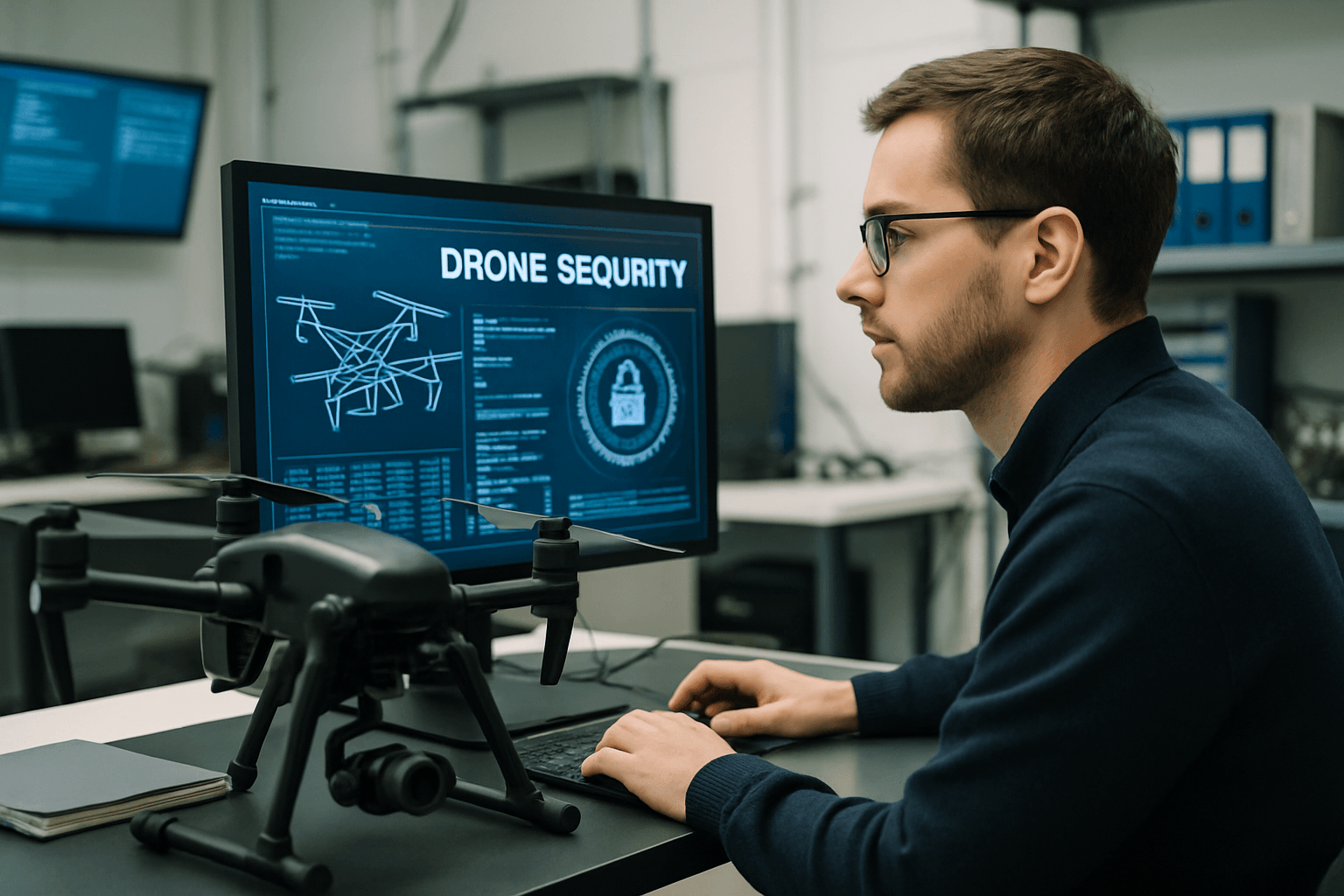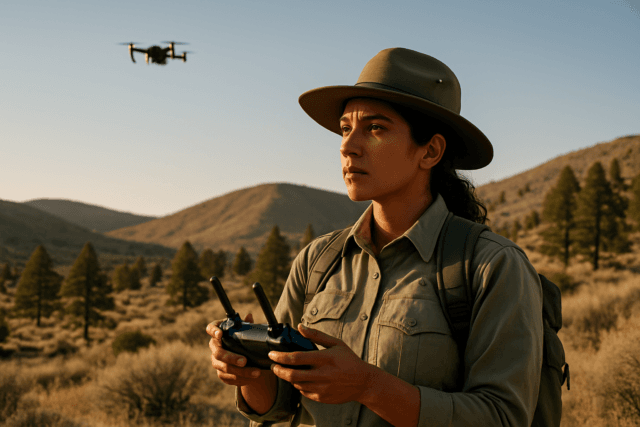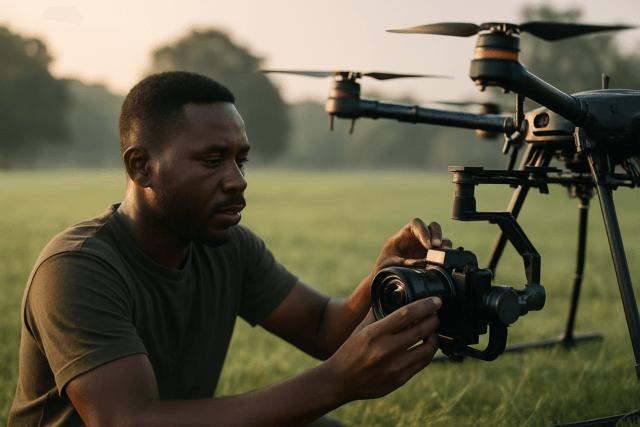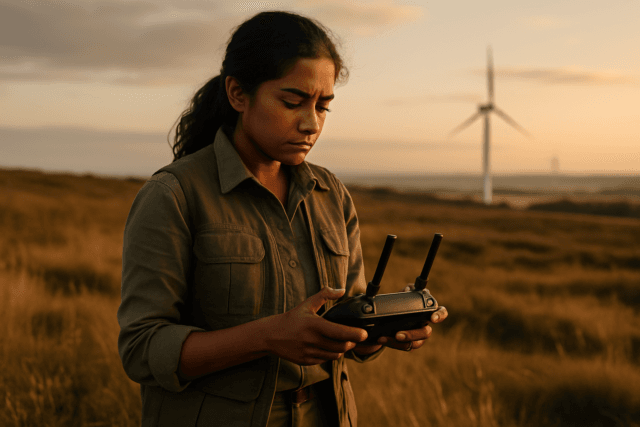Drones have rapidly evolved from hobbyist toys to indispensable tools across various sectors, including logistics, agriculture, and public safety. However, this proliferation brings significant cybersecurity concerns. Drones, heavily reliant on wireless communication, GPS signals, and software, are susceptible to hacking, potentially leading to severe consequences. Understanding the methods, risks, and preventative measures associated with drone hacking is crucial for individuals, businesses, and governments alike.
Understanding Drone Hacking
Drone hacking, also known as drone jacking, involves unauthorized access and control of a drone by exploiting vulnerabilities in its systems. This can range from intercepting communication signals to manipulating GPS data, installing malware, or even physically tampering with the drone’s hardware.
Common Hacking Methods
Several methods can be employed to compromise a drone’s security:
- Signal Interception: Drones communicate with their controllers via radio frequencies. If this communication isn’t encrypted, hackers can eavesdrop or hijack the session. Packet analyzers (“sniffers”) can decode unencrypted radio signals, making it easier to take control.
- GPS Spoofing: By transmitting fake GPS signals, hackers can mislead a drone about its location. This can cause the drone to deviate from its intended path, leading it to a different location or even causing it to crash.
- Command and Control (C2) Interception: Hijacking the command and control signal between the operator and the drone gives the hacker complete control over the drone and its systems.
- Downlink Interception: Intercepting data transmitted from the drone to a base station allows hackers to access sensitive information, such as video feeds, especially if the data is unencrypted.
- Malware Injection: Injecting malicious software into the drone’s system can allow hackers to take control, steal data, or cause the drone to malfunction.
- Wi-Fi Weaknesses: Weak authentication or unprotected Wi-Fi channels can allow unauthorized access to the drone.
- Physical Tampering: Physically accessing the drone’s hardware, such as USB ports, can lead to data theft or the introduction of vulnerabilities.
- Firmware Exploitation: Exploiting vulnerabilities in the drone’s firmware can allow hackers to gain unauthorized access or control.
The Consequences of Drone Hacking
The consequences of drone hacking can be far-reaching and potentially devastating:
- Loss of Control: Hackers can take complete control of the drone, rendering the operator powerless.
- Data Theft: Sensitive data, such as videos, images, and flight logs, can be stolen.
- Physical Damage: Drones can be crashed into objects or people, causing damage or injury.
- Espionage and Surveillance: Hacked drones can be used for unauthorized surveillance and data collection.
- Cyberattacks: Drones can be used to launch cyberattacks on other devices or networks, such as exploiting Wi-Fi, RFID, or Bluetooth vulnerabilities. A drone could drop a small computer on a building’s roof and use it to steal data or hijack Bluetooth peripherals.
- Theft: Drones can be instructed to land near the hacker for theft, along with any payload like cameras or stored images.
- Use as Weapons: Drones can be weaponized by carrying explosives, chemical, or biological substances.
Real-World Examples and Risks
Several incidents and research findings highlight the reality and potential dangers of drone hacking:
- US Army Drones Infected with Malware (2012): Several US Army drones were reportedly infected with malware after an operator used a drone’s computer to download and play a video game.
- Samy Kamkar’s Skyjack Experiment: Security researcher Samy Kamkar demonstrated how a hijacked drone with a Raspberry Pi payload could hijack multiple other drones, creating a swarm under the hacker’s control.
- Johns Hopkins University Research (2016): Researchers at Johns Hopkins University discovered three different ways to hack a drone and cause it to crash. These included overloading the drone’s CPU with connection requests, transmitting an exceptionally large data packet, and repeatedly sending a fake digital packet to the drone’s controller.
- DJI Security Patch: DJI issued a security patch after hackers accessed the manufacturer’s website, gaining access to flight logs, videos, photos, and map views from drone users in real time. However, some users refused to install the patch, leaving their data vulnerable.
These examples demonstrate that drone hacking is not a theoretical threat but a real and present danger. The increasing sophistication of drones and the growing number of devices in the sky only exacerbate the problem.
Industries Impacted by Drone Hacking
Drone hacking poses a significant threat to various industries that rely on drone technology:
- Logistics: Companies like Amazon, UPS, and FedEx use drones for deliveries, making them prime targets for hackers who could steal packages or disrupt operations.
- Agriculture: Farmers use drones to monitor crops, and hacked drones could provide inaccurate data or disrupt farming operations.
- Law Enforcement and Military: Surveillance and tactical drones used by law enforcement and military agencies are vulnerable to hacking, which could compromise sensitive missions and data.
- Critical Infrastructure: Drones can be used to attack critical infrastructure facilities such as data centers or power supply facilities.
- Commercial sector: Real estate agents use them to take aerial shots of properties.
Countermeasures and Prevention Strategies
Fortunately, several measures can be taken to mitigate the risk of drone hacking:
- Strong Encryption: Use strong, modern encryption for all communications between drones and their controllers to protect sensitive information from being intercepted. Employ end-to-end encryption for data transmission, using secure protocols like TLS.
- Firmware Updates: Regularly update the drone’s firmware to patch security flaws and protect against new threats.
- Strong Passwords: Create strong, unique passwords for the drone’s control system and related accounts, and enable two-factor authentication whenever possible.
- Secure Apps: Only use official, trusted apps to control drones, avoiding shady third-party software.
- VPNs and Secure Networks: Subscribe to a Virtual Private Network (VPN) to encrypt your internet connection and prevent hackers from accessing your communications. Alternatively, create a private LTE network for secure communication.
- GPS Authentication: Use drones that support GPS signal authentication to prevent spoofing.
- Geofencing: Set safe zones for drone operation and receive alerts if the drone leaves the designated area.
- Physical Security: Store drones in a secure location to prevent unauthorized access and tampering. Use high-quality locks and boxes to protect drones when not in use.
- Anti-Virus Software: Install the latest anti-virus software on devices used to control drones (e.g., smartphones or tablets) to protect against malware.
- Awareness and Training: Raise awareness among employees and provide training on drone security best practices.
- Intrusion Detection and Prevention Systems: Implement comprehensive logging and real-time monitoring systems to detect security breaches or unauthorized activities.
- Secure Hardware Design: Employ tamper detection and prevention mechanisms and secure hardware designs.
- Secure Data Storage: Encrypt sensitive data stored on the drone and use secure data storage practices. Provide options for remote wipe if necessary.
- Network Security: Strong network encryption, secure network configuration, and disabling unnecessary services.
- Counter-Drone Technology: For critical facilities, invest in anti-drone technology such as radar, jammers, drone detection systems, and electromagnetic pulse tools.
The Future of Anti-Drone Defense Technologies
As drone technology advances, so too must the technologies designed to defend against drone hacking. Emerging trends in anti-drone defense include:
- AI-Based Systems: AI and machine learning are being used to develop systems that can quickly and accurately identify drones and differentiate them from other objects, like birds.
- Cyber Takeover Systems: These systems passively detect radio frequency transmissions emitted by drones, identify the drone’s serial number, and locate the pilot’s position using AI. If the drone is deemed a threat, the system can send a signal to hack the drone, assume control, and direct it to a safe location.
- Quantum Encryption: Quantum encryption offers the potential for highly secure communication channels that are virtually impossible to hack.
- Enhanced Detection Methods: Radar technology is becoming more sophisticated, using high-definition radar and AI to identify drones by their unique “signatures.”
Regulatory and Ethical Considerations
Addressing the threat of drone hacking requires a multi-faceted approach that includes not only technological solutions but also regulatory and ethical considerations:
- Cybersecurity Regulations: Governments need to establish clear cybersecurity regulations and standards for UAVs, addressing vulnerabilities related to internet-connected devices and software updates.
- Data Protection Measures: Implement data protection measures, respect privacy norms, and ensure compliance with relevant regulations such as GDPR when collecting personal data.
- Ethical Use of Counter-Drone Technology: Ensure that counter-drone technology is used responsibly and ethically, with consideration for privacy and potential collateral damage.
Conclusion
Drone hacking is a growing threat that demands immediate attention. As drones become more integrated into our lives and industries, it is crucial to understand the methods, risks, and consequences associated with drone hacking. By implementing robust security measures, staying informed about emerging threats, and fostering collaboration between industry, government, and researchers, we can protect our skies and ensure the safe and responsible use of drone technology.





